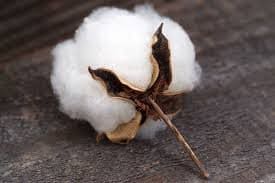History is pounding at agriculture’s door. One of the greatest farming enigmas to afflict growers in the last 100 years has been solved, yet the answer sits idle. At its core, the cotton riddle is simple: How to remove a naturally occurring pest deterrent from seeds, yet preserve the toxin within plants? The long-sought solution means cotton can make a massive leap from fabric to consumption—and provide 10.8 trillion grams of precious protein for the animal feed industry and human intake. Bottom line: After 7,000 years of cultivation, cotton is at the cusp of helping feed the planet.
Cotton has slipped the ball-and-chain of gossypol, a bitter-tasting toxin that ensures the vast majority of cottonseed is only suitable for cattle consumption. Gossypol has long been in the crosshairs of a cotton industry anxious for new markets, but removal exclusively from seed has proved impossible or impractical—until now. A breakthrough advance, painstakingly achieved by a stellar Texas A&M University research team, and supported by the confidence of Cotton Incorporated, has led to cottonseed devoid of gossypol, and tagged with the imprimatur of FDA and USDA. With U.S. red tape in the rearview mirror, next come the formidable hurdles of deregulation in foreign countries and the seal of a seed company, but without exaggeration, the current advance is massive, and opens an era on the near-horizon when essentially all cottonseed planted across the world could be sans gossypol. Plainly stated: When gossypol goes, it ain’t ever coming back.
Bitter Blood
In 1995, Keerti Rathore began working as a biotechnologist at Texas A&M AgriLife Research, and had never set eyes on cotton in the field. Twenty-five years later, down rows densely packed with developing bolls, he is walking in a trial field of TAM66274 cotton—his brainchild variety unique across the planet. With every step, he brushes branches and leaves packed with gossypol, a vital toxin typically present throughout the plant that serves as a wall of defense against insects and microbial disease. But gossypol within cottonseed, present at a level of ~10,000 parts per million (ppm), serves no major purpose, yet ensures the seed cannot be consumed by monograstric species, slamming the dining room door on pigs, chickens, fish and humans. The only animals fit to consume cottonseed and deal with the chemical composition of gossypol are ruminants with specialized stomachs—cows.
However, TAM66274 holds a secret: Despite the high levels of gossypol coursing through the foliage, the seed within the bolls contains a negligible level of gossypol at 300 ppm—well below the 450 ppm threshold set by FDA for human consumption. (WHO and FAO offer a bit more latitude, allowing for human consumption of gossypol below 600 ppm.) Break off a raw, green boll, dig into the layers for a seed sample, and place a rubbery specimen on the palate for a taste test: Simply, the bitter taste is gone from the seed, yet remains within the lifeblood of the plant.
Rathore’s team has achieved ultralow gossypol cottonseed (ULGCS) and the implications are seismic for producers, the feed industry and global nutrition. Why? ULGCS provides a pathway for cotton to become a dual purpose crop.

